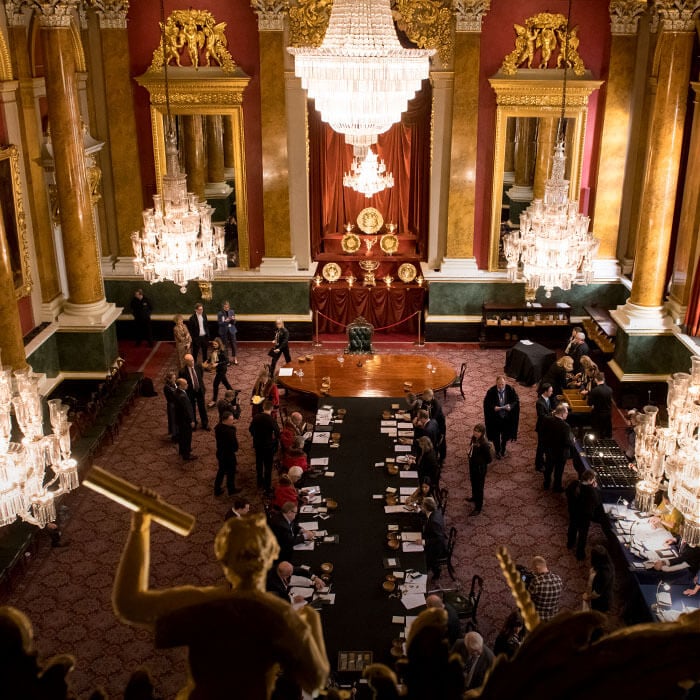
With the advances in science and medicine we benefit from today, it is easy to underestimate how important superstitions once were in the belief they could ward off disease. During the Middle Ages, monarchs were seen as so powerful that the royal touch was thought to cure disease, particularly in cases of scrofula. Known as the ‘King’s Evil’, this swelling of the lymph glands in the neck could cause blindness and even death.
Although there is evidence of Edward the Confessor touching a woman suffering from scrofula on one occasion, there are no records of touch ceremonies taking place during the reigns of the Norman kings. Touching appears to have been a regular practice since the reign of Henry II. Later, Edward I and Edward III are believed to have touched sufferers in large numbers – in the case of Edward III, this is estimated at between 400 and 500 each year. When monarchs administered the royal touch, it was the custom to give money to the sufferer, usually in the form of a penny.
Henry VII, who came to the throne in 1485, took part in healing ceremonies from the start of his reign. He used a gold coin called the angel, which was first issued in 1470 and had a value of 6s 8d, and the coin’s obverse portrayed the archangel St Michael slaying a dragon. A hole was bored into the coins used in the touching ceremonies and a white ribbon was threaded through it, for the person who had been touched to wear as a charm around their neck.

There is little evidence that Henry VIII took part in many healing ceremonies and it seems unlikely that the young and sickly Edward VI performed the tradition; however, Mary I and Elizabeth I both presented touch coins. Initially, James I was reluctant to take part in the ceremonies but continued the tradition following advice from his ministers.
By the reign of Charles I, touch pieces came in the form of gold coins and then silver coins when access to gold was restricted during the Civil War. Under the Protectorate of Oliver Cromwell, the touching custom stopped altogether. Revived following the Restoration, the tradition went on to involve issuing gold coins from foreign countries and the reigns of earlier British monarchs, including those of James 1 and Charles 1. This was largely due to the fact the king was unable to make his own coins during exile. From 1665, specially struck pieces resembling the angel became part of the custom. The tradition peaked during Charles II’s reign when scrofula reached epidemic proportions, and between 1660 and 1682, the king is thought to have touched more than 105,000 people.
The last royal healer was Queen Anne, who touched around 200 people in 1712. A year earlier, Queen Anne touched the English writer Samuel Johnson when he was an infant after he contracted scrofula, but he went on to become blind in one eye and had poor hearing.
Advances in medicine and a change in beliefs led to the practice of healing with touch coins coming to an end long ago. However, other ceremonies – such as the Trial of the Pyx, which tests the quality of coins from The Royal Mint, and the giving of Maundy coins – continue to thrive, centuries after they began. Gifts of coins, such as the silver or decimal 6p piece, also remain popular at weddings and baby showers.
You may also be interested

Ceremonial Coins
Shop now





